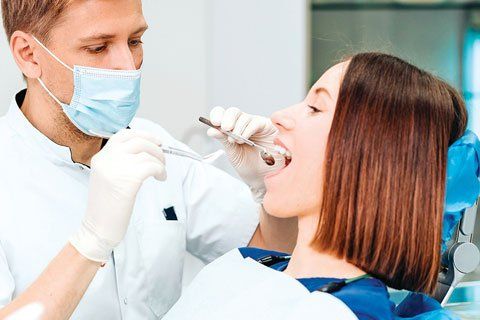Dental Ozone Therapy

Ozone is formed by three molecules of oxygen and occurs naturally. It can also be created by special machinery. The use of ozone in dental therapy exploits ozone production from a special treatment device for various therapeutic purposes.
Ozone decays rapidly as soon as it is removed from the special treatment device. During its degradation, ozone has the capability of killing microorganisms around this. Therefore, ozone is applied via a fine probe to affected areas for its anti-microbial action in dental ozone therapy.
Dental ozone therapy is effective even in gingival pockets, grooves, and root canals, and it is potent against bacteria, viruses, and fungi.
One of the major benefits of dental ozone therapy is that it is free of side effects and has no known allergic reactions. This makes dental ozone therapy suitable for everyone. Some other benefits you might enjoy from dental ozone therapy include:
- Reliable disinfection
- Ozone has been shown to help stop bleeding
- Pain relief
- Supports and enhances the healing process
- Dental Implants: The use of local ozone therapy has proven effective. It eliminates all germs through its anti-microbial properties, which help support and boost the healing process post-implantation.
- Treatment of dental caries: Local ozone therapy can also be used to treat dental caries. Dental ozone therapy eliminates all kinds of germs on the tooth. It can also destroy germs present even in the finest grooves of the teeth. Dental ozone therapy can also confer protection on the tooth and prevent the formation of new caries over time.
- Treatment of gingivitis and periodontitis: Ozone treatment is quite beneficial in situations of gum disease. Even local ozone therapy promptly eradicates the microorganisms that can damage and ruin the gum structure in deep gum pockets. Dental ozone therapy can also be used to support periodontal therapy successfully.
- Treatment of hypersensitivity: Individuals who experience tooth sensitivity to hot, cold, sour, or sweet substances have experienced relief from dental ozone therapy.
- Removable dentures: Some individuals using removable dentures might experience certain symptoms like pressure sores and thrush (candidamycosis). These individuals experience relief from these and other symptoms associated with the use of removable dentures after undergoing dental ozone therapy.
- Treatment of aphthae, herpes, and fungal diseases: Dental ozone therapy manages these conditions by eliminating all causative germs. Local ozone therapy provides almost immediate relief from symptoms and contributes to the rapid resolution of herpes, aphthae, and fungal diseases.
- Wound treatment
- Surgical interventions: Dental ozone therapy can be performed before, during, and after surgical interventions.
- Treatment of inflammation: Local ozone therapy can be used to treat inflammation. It is also used to prevent further damage from inflammatory reactions.
Conclusion
Dental ozone therapy has a wide range of applications and is effective against bacteria, fungi, and viruses. It has no side effects or allergic reactions, and it is becoming increasingly popular in dentistry today.


